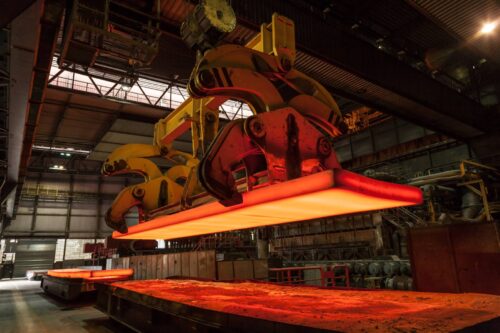
Decarbonizing Hard-to-Abate Industries: The Importance of a New Accounting Method
Realizing the urgency to decarbonize the hard-to-abate industries to limit global temperature rise to 1.5°C, leading companies are gathering to harness their purchasing power to create market signals for low-carbon technologies and materials. However, questions arise as to the extent of these corporate climate ambitions to drive real decarbonization actions. Poor carbon data and calculation transparency is a key challenge hampering the impact of procurement decisions toward real emissions reductions. The current carbon accounting system has been criticized for not providing enough emissions transparency and comparability, leaving companies to guesstimate supplier’s emissions.
Horizon Zero, aimed at closing the gap between corporate climate ambition and industry decarbonization actions, is providing accounting guidance at the product level to bring emissions transparency to commodities from hard-to-abate industries. One solution — distinguishing the emissions intensity of virgin and recycled inputs in product-level emissions accounting — is essential to activate the low-carbon market and lead to real-world emissions reductions.
The Need for New Low-Emissions Processing and Circularity
Steel, aluminum, and petrochemicals — some of the hardest-to-abate industries — together accounted for 14 percent of global GHG emissions in 2019, presenting an urgent need for decarbonization action to meet ambitious climate goals for the coming decade. Increasing materials efficiency and circularity (sending a product back into the supply chain instead of the landfill) — presents the fastest and most viable opportunity to cut emissions in the near term. A circular economy also brings a myriad of environmental benefits beyond carbon reduction. For example, it will help reduce iron ore extraction by 37 percent, saving 344 million m3 of water use and avoiding more than 170 acres of land use change per year based on global iron ore production in 2020.
However, the available stock of scrap is constrained by product lifetimes, especially those in buildings, infrastructure, and automobiles, meaning there is insufficient supply to completely replace virgin material and reach net-zero by 2050. For example, even the most optimistic modeling suggests that recycled inputs can only meet 70 percent of total steel demand in 2050. Therefore, in addition to increasing recycling, advancing zero-carbon technologies for processing virgin materials will be equally important to reach the net-zero goal. Efforts on decarbonizing production from virgin materials are starting to gather momentum as industry leaders are piloting and scaling up zero-carbon technologies and buyer coalitions are committing to the development of key technologies. Accounting guidance that can differentiate low-carbon products with accountable and transparent emissions data becomes essential to ensure the integrity of the low-carbon commodity market.
A Better Accounting Method
The prevalent carbon accounting system, a corporate-level aggregation, does not provide visibility into a product’s carbon specifications or incentives for green procurement. Even at the product level, decarbonization efforts made by a product’s upstream supplier can be hidden by the current accounting system (see Exhibit below). To capitalize on the momentum of the low-carbon market, RMI’s solution — distinguishing the emissions intensity of virgin and recycled supply chain segments — is designed to provide transparent and credible metrics to differentiate industry players’ decarbonization commitments at the product level as it moves downstream.
Benefits to Supply Chain Stakeholders
This solution provides a vital value-add to leading supply chain players, public and private purchasers, and policymakers. Here is how different stakeholders can use this guidance:
- Corporations with ambitious climate action goals and net-zero targets can use it to track and verify suppliers’ decarbonization progress and ensure their corporate purchasing power leads to effective emissions reductions. This will help catalyze demand signals for low-carbon products to further incentivize emissions reduction actions.
- Industry producers can use it to differentiate decarbonization efforts in their products, gaining a competitive advantage in meeting their corporate buyers’ net-zero goals.
- Policymakers can use the emissions data to support the enforcement of policy instruments, like CBAM (Carbon Border Adjustment Mechanism), becoming more targeted and therefore steering these product climate policies toward effective decarbonization outcomes.
- Broadly, this guidance also advances the development of product policy initiatives and product climate claims, like the Product Environmental Footprint and the Environment Product Declaration, by driving the availability of quality-assured primary data for emissions associated with virgin and recycled inputs. This data would also feed into life-cycle modeling of more complex products informing more sustainable product design.
Join Us!
RMI is advancing carbon accounting guidance by distinguishing emissions intensity of virgin and recycled inputs to provide accountable and transparent climate metrics to ensure the integrity and catalyze the low-carbon commodity market. Sectoral working groups for steel, aluminum, and petrochemical industries are in development to finalize the guidelines. Supply chain stakeholders are encouraged to weigh in with feedback or join the working group by contacting Hao Wu, Market Activation Manager (hwu@rmi.org) at Horizon Zero.